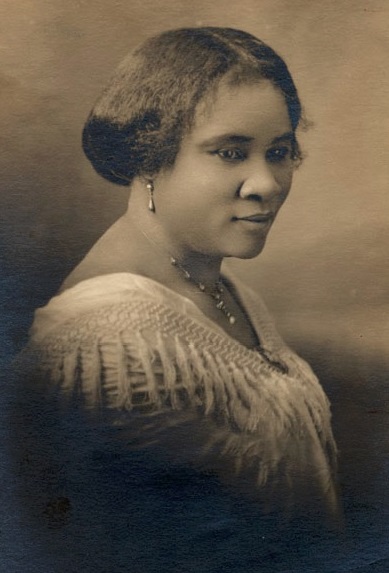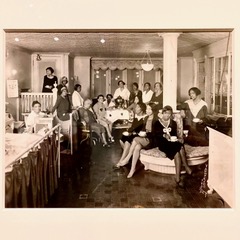You may be familiar with America’s first female self-made millionaire, MADAM C. J. WALKER, but do you know how she earned and used her wealth?

Born Sarah Breedlove in 1867, she was the first person in her family born into freedom. Despite this auspicious beginning, she was orphaned by age 7, married at 14, and widowed when only 20. After her husband died, she was left to raise their 2-year-old, Leila, on her own. Forced to take low-paying jobs, she was determined to provide her daughter with the education she never had.
Breedlove and Leila moved to St. Louis, where she worked as a laundress. Plagued by various scalp issues, such as severe dandruff and baldness—all exacerbated by using harsh grooming products and the chemicals from her job, Breedlove began using Poro products, an African American haircare company owned by Annie Turnbo Malone. By 1904, Breedlove was an employee of Malone. The following year, Breedlove and Leila moved to Denver to continue selling Poro, but she had also developed her own hair care line, so used this new opportunity to sell both.
Everything changed in 1906! Breedlove met, and married, Charles Joseph Walker. He believed in her vision and worked on advertising and establishing a mail-order service for her line of hair care products while she rebranded herself: Madam C. J. Walker, entrepreneur. She and Charles initially sold her products door-to-door, before eventually establishing offices in Indianapolis and Harlem.
Throughout her career, Walker’s company focused on training Black women to be financially independent. She opened her own beauty parlor and college to train women as “hair culturists”. She developed the “Walker System” to train and license her international network of sales agents to ensure they earned hefty commissions.
Walker’s desire to enable others did not stop with her company, as she used her wealth and position to improve life for all African Americans. She advanced causes such as education and small businesses through philanthropy and political activism. She didn’t just serve on numerous committees, she bankrolled scholarships and projects.
When she died at 51, she was a millionaire. But Walker was never interested in gaining money for herself; she was committed to making Black women and men financially independent through education and training.
Thank you, Madam C. J. Walker for showing us how millionaires can positively affect change.

To learn more:
Photo of Madam CJ. Walker credit: Scurlock Studio (Washington, D.C.) (photographers)., Public domain, via Wikimedia Commons

